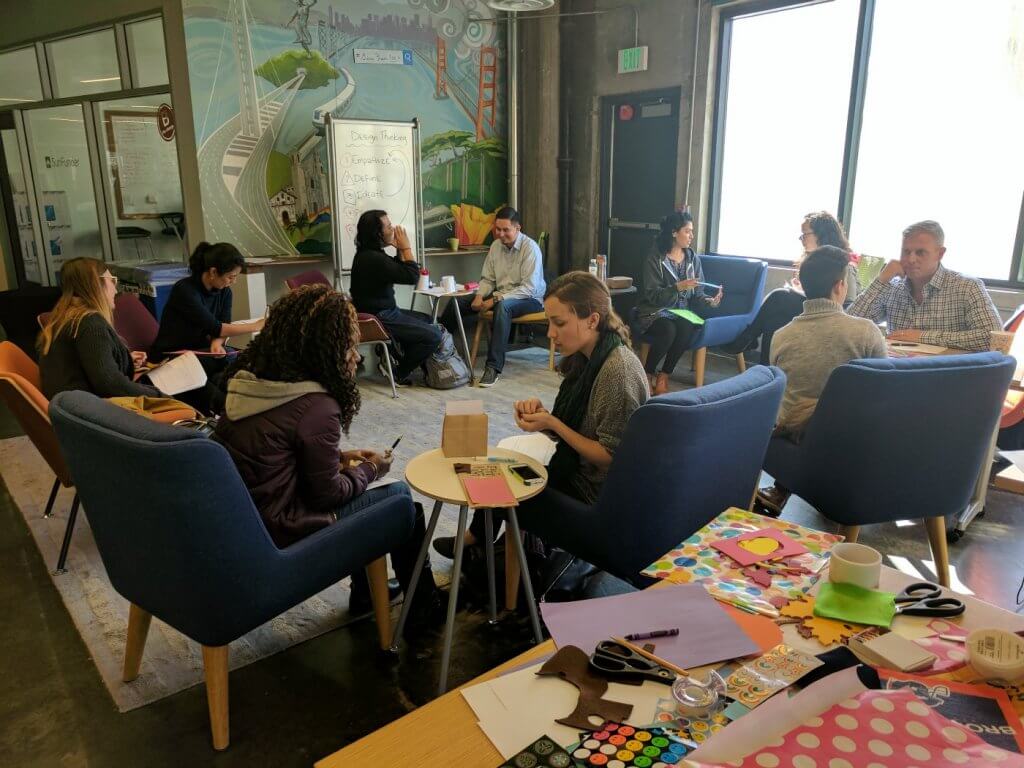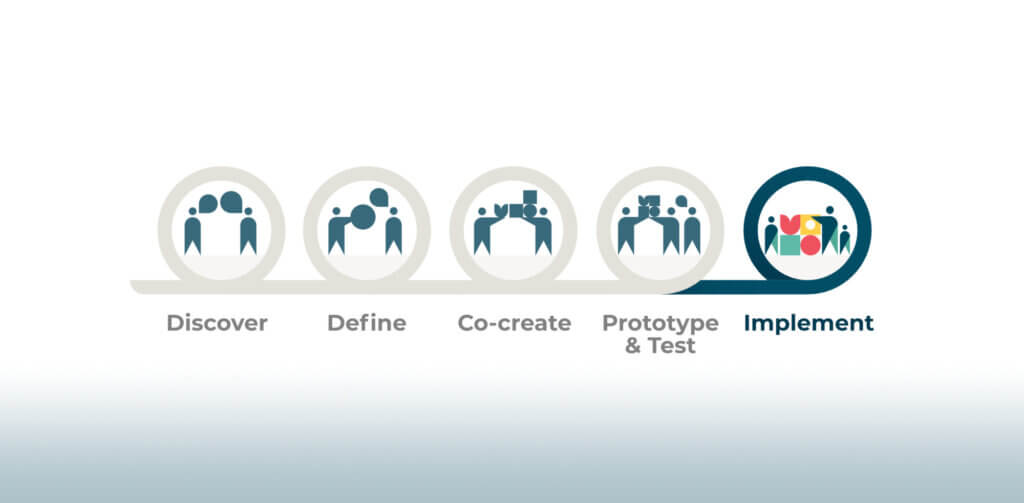Now More Than Ever

If the recent election showed us anything, it’s that we need to learn to listen and understand each other better. Now, more than ever, the need for diverse groups of people to work collaboratively on challenges that affect them directly and find common ground is critical to ensuring human needs are being met. This is the work CivicMakers is committed to doing with our local government partners and other nonprofits and NGOs. One of the ways we’re doing this is helping to bring innovation processes and methodologies, such as Human-Centered Design, to the sector in a way that is relevant, meaningful and accessible.
What is Human-Centered Design?
Human-Centered Design (HCD) is a research and design methodology involving human input and perspective at all levels of the problem-solving process. Because, if you are solving problems for humans, WHY do it any other way?! ¯\_(ツ)_/¯
HCD has been popularized and evangelized since the early 2000s by firms such as IDEO and frog, largely helping private sector companies understand the needs of their customers. The Stanford d.school offers free resources for those interested in learning HCD (also known as Design Thinking). While the methodology previously focused on developing consumer products and services, there has been an increased interest in applying it to government services, programs, and even public policy. However, for HCD to be truly effective in the public sector, the process must be contextualized for the specific environment and unique needs of government staff.
The CivicMakers Take on HCD
In July, CivicMakers held a workshop at the Unlikely Allies Future of Cities Festival and City Solutions Laboratory in Seattle on HCD in public sector product and service delivery. Below are some insights and lessons we learned as translators between public sector actors and private sector entrepreneurs.
Government can’t choose its customers
Governments do not have the luxury that private sector technology companies do, where they can create products that go out into the world and might only serve a small portion of the population’s needs. Governments have to respond to the needs of every resident they serve and, therefore, a methodology for designing those services needs to look different.
Governments are also far more risk-averse than private sector companies that typically earn the “innovation” credit. There are more organizational hierarchies and stakeholders to navigate; larger systems to work within; higher stakes and greater complexity to problems. Translating HCD from the private sector to the public sector is not always a smooth transition. Further, the idea that there is a one-size-fits-all approach to design negates the purpose of designing in the first place.
Context Matters
Part of HCD requires some context immersion — how do government staff know how users (residents) are responding to government service delivery without understanding their context? Practitioners of HCD highlight the importance of empathizing with those who may ultimately be using the program or service delivered. Sometimes this means bringing folks “into the field” or even recording how users might interact with a website. There have been great examples of this happening in the public sector.
Much of the work using HCD in government agencies has occurred at the federal level, and often involves creating technology solutions. The Office of Personnel Management (OPM) created The Lab@OPM in 2012 to help Federal agencies adopt innovative methodologies. One of the exciting case studies to emerge from this endeavor comes from the US Department of Agriculture on how HCD is being used to improve the country’s National School Lunch Program.
Applying HCD to local government can have exciting ripple effects into how government services can be more responsive, transparent and — dare we say — even enjoyable for the users of those services. Another positive side effect to this process is enabling government staff, in this case, the designers, to connect directly with the users in a safe, structured way that leads to actionable feedback.

We’re Listening! Co-Designing HCD for Government
Since curating the training component of the San Francisco Mayor’s Office of Civic Innovation’s Startup in Residence program this summer, we’ve seen the need for innovation trainings that will be impactful for our public sector colleagues. We recently hosted an ideation session with some of our friends at various levels of government to understand what kind of HCD training would most benefit them and their colleagues.
We heard lots of valuable feedback and input from this session, and this perspective from a developer at the San Francisco Department of Technology proves we’re reaching a critical point:
Government agencies have had so many years of not changing that there is now more risk in remaining stagnant than there is for experimentation.
The group also named leadership, policymakers and other internal stakeholders as “prime for change.” Some of the needs articulated during the session included: providing outcomes-driven programming; empowering all parts of an organization; creating a safe space for experimentation; breaking up silos; and allowing for agencies to take more strategic risks. These and other components are currently being built into our various training modules, along with hands-on problem-solving exercises and tangible frameworks.
If only Ron had recognized he might actually learn something by listening to the concerned resident.
What’s Next?
Innovation happens everyday, at every level of government. Many public servants are faced with the reality of working within legacy software systems and processes, for example. Clever bureaucrats often create intricate workarounds for accomplishing their tasks within mounting constraints. These are not the stories that are typically told, but the growing interest in applying HCD to the public sector context is helping to shine a light on innovation that already exists within the sector.
We seek to help democratize access to these approaches, while adapting them to fit the unique needs of each audience — especially for folks who find terms like “innovation” and “design” intimidating. Because now, more than ever, meeting people where they are at and celebrating small wins will be important for governance challenges that lie ahead. We can’t wait to get our hands dirty with you! Stay tuned for more stories on how this work is playing out, and sign up for our newsletter below.



